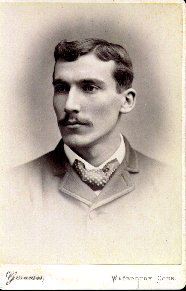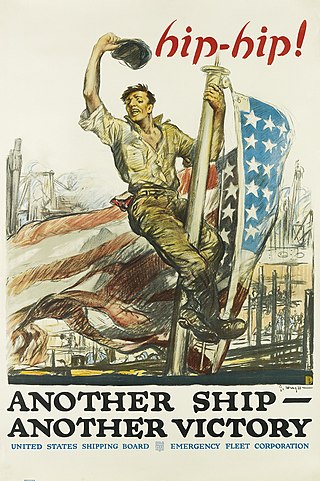Related Research Articles

Jan van Eyck was a Flemish painter active in Bruges who was one of the early innovators of what became known as Early Netherlandish painting, and one of the most significant representatives of Early Northern Renaissance art. According to Vasari and other art historians including Ernst Gombrich, he invented oil painting, though most now regard that claim as an oversimplification.

Prescott Sheldon Bush Sr. was an American banker and Republican Party politician. After working as a Wall Street executive investment banker, he represented Connecticut in the United States Senate from 1952 to 1963.A member of the Bush family, he was the father of President George H. W. Bush, and the paternal grandfather of President George W. Bush and former Florida Governor Jeb Bush.

John Trumbull was an American painter and military officer best known for his historical paintings of the American Revolutionary War, of which he was a veteran. He has been called the "Painter of the Revolution". Trumbull's Declaration of Independence (1817), one of his four paintings that hang in the United States Capitol rotunda, is used on the reverse of the current United States two-dollar bill.

S. S. Van Dine is the pseudonym used by American art critic Willard Huntington Wright when he wrote detective novels. Wright was active in avant-garde cultural circles in pre-World War I New York, and under the pseudonym he created the fictional detective Philo Vance, a sleuth and aesthete who first appeared in books in the 1920s, then in films and on the radio.

Charles Adams Platt was an American architect, garden designer, and artist of the "American Renaissance" movement. His garden designs complemented his domestic architecture.

John Conover Ten Eyck was a United States Senator from New Jersey from 1859 to 1865, during the American Civil War. He was a member of the Republican Party.
Ten Eyck is a Dutch toponymic surname meaning "at the oak". Extinct in the Netherlands, most people belong to a single American family descended from Coenraadt Ten Eyck, who arrived from the Netherlands around 1651. It may refer to:

John Adams was an American educator noted for organizing several hundred Sunday schools. He was the 4th Principal of Phillips Academy. His life was celebrated by Dr. Oliver Wendell Holmes Sr. in his poem, "The School Boy", which was read at the centennial celebration of Phillips Academy in 1878, thus recalls him:
Uneasy lie the heads of all that rule — His most of all whose kingdom is a school.

Thomas Hillhouse was an American farmer, banker and politician.

John Quincy Adams II was an American politician who represented Quincy in the Massachusetts House of Representatives from 1866 to 1867, 1868 to 1869, 1871 to 1872, and from 1874 to 1875.

Francis Cugat, also known as Francisco Coradal-Cougat, was a painter and graphic designer whose most famous work was Celestial Eyes, the original 1925 dust jacket for The Great Gatsby by F. Scott Fitzgerald. From the mid-1940s he was a Technicolor consultant on more than 60 Hollywood films.
Charles Scribner III, also known as Charles Scribner Jr., was president of Charles Scribner's Sons publishing company starting in 1932.

Henry Golden Dearth was a distinguished American painter who studied in Paris and continued to spend his summers in France painting in the Normandy region. He would return to New York in winter, and became known for his moody paintings of the Long Island area. Around 1912, Dearth changed his artistic style, and began to include portrait and still life pieces as well as his paintings of rock pools created mainly in Brittany. A winner of several career medals and the Webb prize in 1893, Dearth died suddenly in 1918 aged 53 and was survived by a wife and daughter.

Fairmount Cemetery in Denver, Colorado, was founded in 1890 and is Denver's second oldest operating cemetery after Riverside Cemetery. It is located in land south-east of the intersection of the major Denver roadways Alameda Ave. and Quebec St.. The cemetery was designed by German landscape architect Reinhard Schuetze. The cemetery was patterned after Mount Auburn Cemetery in Cambridge and Watertown, Massachusetts. The cemetery occupies 280 acres (110 ha). The first year the cemetery opened over 4500 trees and shrubs were planted by Schuetze. The cemetery is the largest arboretum in the state.

H. (Henry) Neill Wilson was an architect with his father James Keys Wilson in Cincinnati, Ohio; on his own in Minneapolis, Minnesota; and for most of his career in Pittsfield, Massachusetts. The buildings he designed include the Rookwood Pottery building in Ohio and several massive summer cottages in Berkshire County, Massachusetts.

George Hand Wright (1872–1951) was an American painter, illustrator and printmaker.
Carl Schmitt was an American painter, etcher, pastelist, and writer.

The Ten Eyck family came from the Netherlands to New Amsterdam in the 1630s. The patriarch of the American branch of the family was Coenraedt Ten Eyck, who was originally from Moers. His son Jacob moved to Albany where he was a silversmith. Several family members gained land, wealth and positions of power in Albany, New York City and New Jersey. Their descendants served as Albany Mayor, New York State Senator, U.S. Representatives from New York, and U.S. Senator from New Jersey. The Ten Eycks also formed several businesses, including the Ten Eyck hotel and the Ten Eyck insurance group.

Julia Hunt Catlin Park DePew Taufflieb was a philanthropist and socialite who was the first American woman to be awarded the Croix de Guerre and Legion d'honneur by France in 1917 for turning her Château d'Annel into a 300-bed hospital during World War I.
References
- 1 2 "John A. Ten Eyck Dead, Painter and Etcher. Artist Was Widely Known for His Landscapes and Studies of Still Life". New York Times . 1932-10-22. Retrieved 2008-07-11.
- ↑ World War I draft registration
- ↑ "Miss Partridge a Bride" (PDF). New York Times . March 9, 1918. Retrieved 2008-07-29.
- ↑ "Beverley Sener Wed To Aubin Lueckner". New York Times . September 19, 1976. Retrieved 2008-07-29.